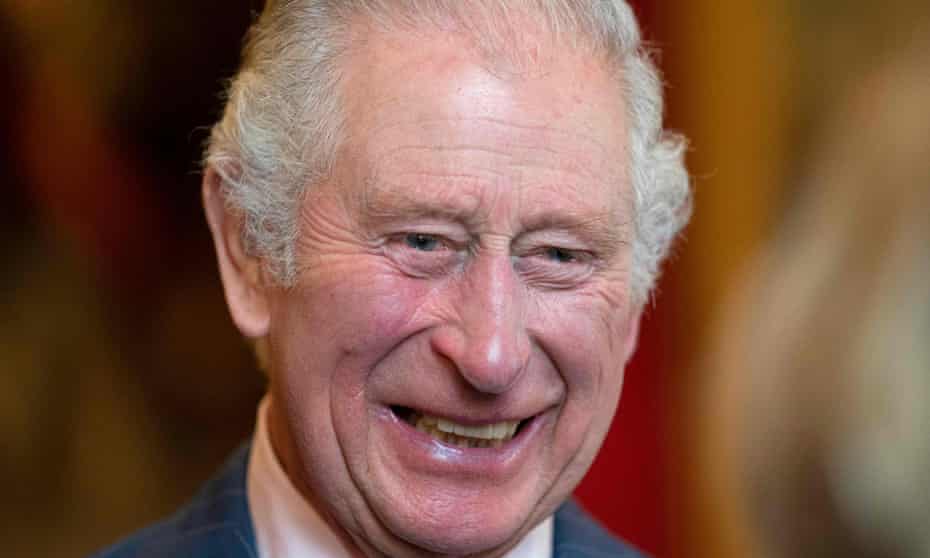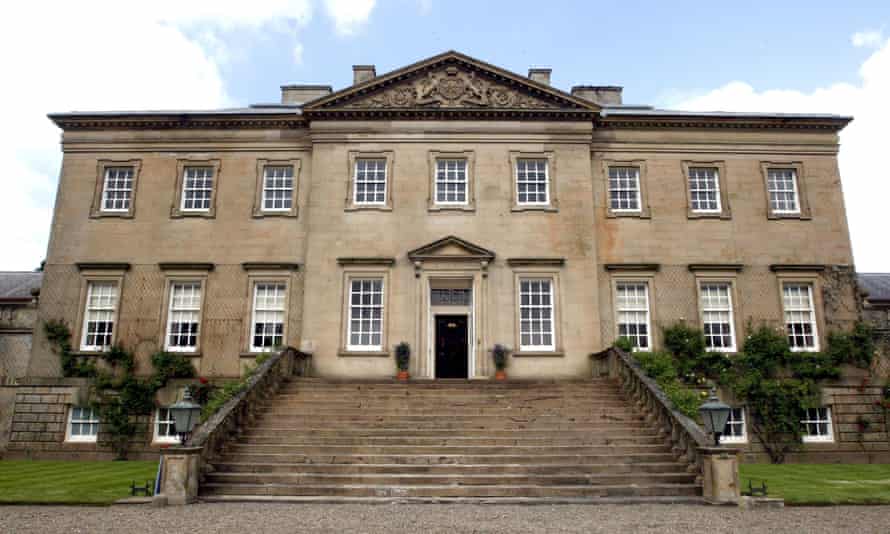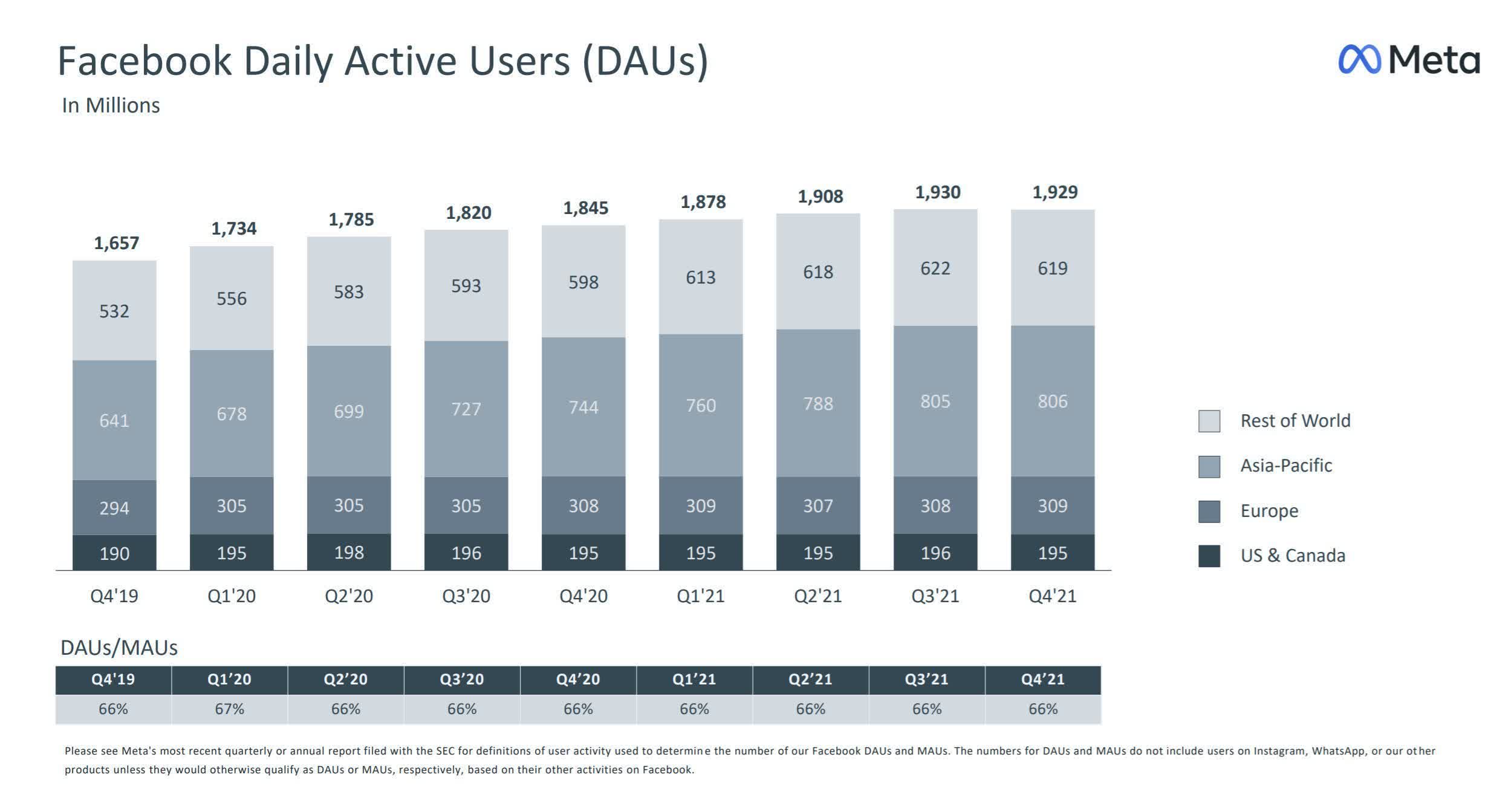How authorities are targeting the 'freedom convoy' money via the Emergencies Act
Costanza Musu, Associate Professor, Graduate School of Public and International Affairs, L’Université d’Ottawa/University of Ottawa
Patrick Leblond, CN-Paul M. Tellier Chair on Business and Public Policy, L’Université d’Ottawa/University of Ottawa -
The Conversation
The Canadian government gave itself extraordinary powers for a 30-day period to end the “freedom convoy” occupation of Ottawa by invoking the Emergencies Act.
The situation was especially difficult in Ottawa, where trucks occupied the downtown core and Parliament Hill for weeks. Tensions with residents came to a breaking point after three weeks of incessant noise, shuttered businesses, harassment and disruption of normal life.
Two types of emergency measures were adopted.
First, the Emergency Measures Regulations prohibit public gatherings that could “lead to a breach of the peace.” The regulations also ban travelling to such gatherings, as well as providing any type of property in support of them.
Second, the Emergency Economic Measures Order is aimed at starving the convoy of money and deterring people from supporting its activities. It deprived convoy participants of the ability to pay for gasoline to keep vehicles and generators running, food, hotel rooms, bouncy castles, fireworks, etc. The goal was to end the convoy’s activities so that the city of Ottawa could get back to normal without any need for a violent crackdown.
How did the federal government take away the convoy’s financial resources to force them to end their activities? It did so in two ways: by stopping new money from being sent to convoy organizers and participants, and by blocking access to funds already in their hands.
The Conversation
The Canadian government gave itself extraordinary powers for a 30-day period to end the “freedom convoy” occupation of Ottawa by invoking the Emergencies Act.
The situation was especially difficult in Ottawa, where trucks occupied the downtown core and Parliament Hill for weeks. Tensions with residents came to a breaking point after three weeks of incessant noise, shuttered businesses, harassment and disruption of normal life.
Two types of emergency measures were adopted.
First, the Emergency Measures Regulations prohibit public gatherings that could “lead to a breach of the peace.” The regulations also ban travelling to such gatherings, as well as providing any type of property in support of them.
Second, the Emergency Economic Measures Order is aimed at starving the convoy of money and deterring people from supporting its activities. It deprived convoy participants of the ability to pay for gasoline to keep vehicles and generators running, food, hotel rooms, bouncy castles, fireworks, etc. The goal was to end the convoy’s activities so that the city of Ottawa could get back to normal without any need for a violent crackdown.
How did the federal government take away the convoy’s financial resources to force them to end their activities? It did so in two ways: by stopping new money from being sent to convoy organizers and participants, and by blocking access to funds already in their hands.
Crowdfunding played a big role
Stopping the flow of new funds means preventing donations from reaching the convoy’s organizers or anyone associated with them. Crowdfunding platforms have been the main vehicle for channelling donations to the convoy.
Until the Emergencies Act was invoked, the only way to stop donations from reaching the convoy was by appealing to the goodwill of crowdfunding platforms, as occurred with GoFundMe, or by seeking legal injunctions against them, as with GiveSendGo.
In GiveSendGo’s case, the crowdfunding platform refused to abide by the judge’s ruling. It claimed that the Ontario court did not have jurisdiction over its operations since it’s based in the United States.
Furthermore, even if GiveSendGo had respected the injunction, donations to the convoy would have just moved to another platform. That’s what happened after GoFundMe froze the funds destined to the convoy; donors moved to GiveSendGo and other platforms, including ones collecting donations in cryptocurrencies like Tallycoin.
The emergency economic measures now require domestic and foreign crowdfunding platforms to register temporarily with the Financial Transactions and Reports Analysis Centre of Canada (FINTRAC).
This means they must provide FINTRAC with information about donations sent to the convoy (or similar activities being organized), no matter the amount. That’s because the convoy is now considered akin to a terrorist organization.
According to Barry MacKillop, FINTRAC’s deputy director for intelligence, crowdfunding platforms were not under FINTRAC’s regulatory purview until the Emergencies Act was invoked.
Why such platforms were not already covered by existing rules is unclear, since they are in the business of remitting or transmitting funds. In any case, Finance Minister Chrystia Freeland plans to introduce legislation so that crowdfunding platforms continue to register with and report to FINTRAC after the emergency ends.
Once FINTRAC receives information on convoy donations from crowdfunding platforms, it analyzes the information and passes it on to law enforcement agencies like the RCMP. Law enforcement authorities are responsible for freezing the funds associated with these donations, not FINTRAC.
What happens to the seized funds depends on the legal proceedings that follow, but convoy donors could lose their donations forever. This possibility is aimed at deterring new donations.
Will foreign platforms comply?
What isn’t clear yet is whether foreign crowdfunding platforms are complying with the new requirement to register with and report to FINTRAC (if they collect donations for the convoy), and, if they don’t, how they’ll be sanctioned.
For this reason, blocking access to financial services used by the convoy’s organizers and associates has probably been more effective at starving the protests of funds. The emergency economic measures require financial institutions, payments platforms, funding platforms, digital currency exchanges, etc., to stop doing business with anyone directly or indirectly associated with the convoy.
This includes freezing their accounts for the emergency’s duration. The measures also cover those who provide in-kind contributions to the convoy, like food or gas.
Fear of losing access to their money, even if only for a few weeks, should keep people and businesses away from the convoy and its activities. But law enforcement authorities must play their part.
First, they must collect the names of people and companies associated with the convoy and pass them on to entities providing financial services in Canada (so accounts can be frozen). Second, they need to ensure that sanctions are imposed on anyone in the financial system who does not abide by the Emergency Economic Measures Order.
After that, the only way for the convoy movement to survive would be to conduct its entire business in cash. But with accounts in Canada frozen, where would the cash come from? It isn’t likely to come from converting Bitcoins collected for the convoy into cash because it’s too difficult to do without going through traditional financial institutions.
Cash would have to come from abroad, especially the United States, where accounts cannot be frozen. Already, anyone bringing more than $10,000 in any form into Canada must declare it. And border officials have likely been extra-vigilant about cash entering the country in the past few days.
The backbone of the convoy’s activities was its access to a steady flow of financing from donors both domestic and foreign. By deterring convoy supporters and participants, the federal government made it easier for law enforcement to bring a relatively peaceful end to an unprecedented crisis in Canada.
This article is republished from The Conversation, a nonprofit news site dedicated to sharing ideas from academic experts.
Read more:
The end of the ‘freedom convoy’ in Ottawa: Why rejoicing when occupiers get arrested isn’t the answer
Anti-vax protest or insurrection? Making sense of the ‘freedom convoy’ protest
Patrick Leblond is affiliated with the Centre for International Governance Innovation and the Centre interuniversitaire de recherche en analyse des organisations (CIRANO).
Costanza Musu receives funding from the Social Sciences and Humanities Research Council. (SSHRC)
Peter Zimonjic - cbc.ca
More than 200 bank accounts worth nearly $8 million were frozen when the federal government used emergency powers to end a massive protest occupation of downtown Ottawa.

© Scott Olson/Getty Images

© Scott Olson/Getty Images
A Department of Finance official went before a House of Commons committee to explain the financial measures deployed against convoy protest organizers under the Emergencies Act.
Federal officials report most of the accounts are now in the process of being released, a parliamentary committee heard Tuesday.
Isabelle Jacques, assistant deputy minister of finance, told a committee of MPs that up to 210 bank accounts holding about $7.8 million were frozen under the financial measures contained in the Emergencies Act.
"Information was shared by the RCMP with financial institutions and we were informed yesterday by financial institutions that they were unfreezing the accounts," she said.
"The vast majority of accounts are in the process of being unfrozen, subject to any new information that the RCMP may have."
Jacques said that because accounts are being released now, the number of accounts affected and their total dollar value continues to decrease by the day.
She also said the fact that more than 200 bank accounts were frozen did not necessarily mean that more than 200 people lost access to their funds. Jacques said that individuals may have held more than one account affected by the measures.
Some Conservative MPs have said constituents have reported that their bank accounts were frozen after they made donations to the convoy protest through one of its crowdfunding campaigns.
In a statement released Monday, the RCMP said it only provided banks with the names of convoy organizers and the owners of trucks who had refused to leave the protest area. The RCMP said it did not release an exhaustive list of every donation made.
"At no time did we provide a list of donors to financial institutions," the statement said.
Small donors unlikely to be affected: official
Jacques said that the financial measures in the Emergencies Act came into force on Feb. 15 and were specifically designed to apply enough financial pressure to convince protest organizers and participants to go home.
"Based on the knowledge that I have, I think it would be unlikely that someone who gave … $20 three weeks ago, or even $20 post Feb. 15, that they would have been captured by a freeze," she said.
"It's not impossible in view of the order, but in view of the exchange of information and the focused approach that was taken to stop the illegal funding of these activities, it would appear to be unlikely that this occurred, but not impossible."
She said the measures should not affect anyone who provided financial support to the convoy before Feb. 15. Jacques said that anyone who saw their account frozen and who subsequently left the blockade area should expect to see the account unfrozen in the coming days.

Since the Emergencies Act was invoked, the Liberal government has been asked to explain what specific powers the act provides that did not already exist under conventional Canadian law.
Jacques told MPs that before the Emergencies Act was invoked, FINTRAC — Canada's financial intelligence unit — could not police the movement of money through some crowdfunding websites and some payment service providers.
She also said that while the federal government does have the power to freeze bank accounts in certain limited circumstances without using the Emergencies Act — in cases of suspected terrorism or financial crimes, for example — it did not do so in this instance.
"There's no other venues to freeze the accounts in view of the … illegal blockades that were ongoing," she said.
Federal officials report most of the accounts are now in the process of being released, a parliamentary committee heard Tuesday.
Isabelle Jacques, assistant deputy minister of finance, told a committee of MPs that up to 210 bank accounts holding about $7.8 million were frozen under the financial measures contained in the Emergencies Act.
"Information was shared by the RCMP with financial institutions and we were informed yesterday by financial institutions that they were unfreezing the accounts," she said.
"The vast majority of accounts are in the process of being unfrozen, subject to any new information that the RCMP may have."
Jacques said that because accounts are being released now, the number of accounts affected and their total dollar value continues to decrease by the day.
She also said the fact that more than 200 bank accounts were frozen did not necessarily mean that more than 200 people lost access to their funds. Jacques said that individuals may have held more than one account affected by the measures.
Some Conservative MPs have said constituents have reported that their bank accounts were frozen after they made donations to the convoy protest through one of its crowdfunding campaigns.
In a statement released Monday, the RCMP said it only provided banks with the names of convoy organizers and the owners of trucks who had refused to leave the protest area. The RCMP said it did not release an exhaustive list of every donation made.
"At no time did we provide a list of donors to financial institutions," the statement said.
Small donors unlikely to be affected: official
Jacques said that the financial measures in the Emergencies Act came into force on Feb. 15 and were specifically designed to apply enough financial pressure to convince protest organizers and participants to go home.
"Based on the knowledge that I have, I think it would be unlikely that someone who gave … $20 three weeks ago, or even $20 post Feb. 15, that they would have been captured by a freeze," she said.
"It's not impossible in view of the order, but in view of the exchange of information and the focused approach that was taken to stop the illegal funding of these activities, it would appear to be unlikely that this occurred, but not impossible."
She said the measures should not affect anyone who provided financial support to the convoy before Feb. 15. Jacques said that anyone who saw their account frozen and who subsequently left the blockade area should expect to see the account unfrozen in the coming days.

Since the Emergencies Act was invoked, the Liberal government has been asked to explain what specific powers the act provides that did not already exist under conventional Canadian law.
Jacques told MPs that before the Emergencies Act was invoked, FINTRAC — Canada's financial intelligence unit — could not police the movement of money through some crowdfunding websites and some payment service providers.
She also said that while the federal government does have the power to freeze bank accounts in certain limited circumstances without using the Emergencies Act — in cases of suspected terrorism or financial crimes, for example — it did not do so in this instance.
"There's no other venues to freeze the accounts in view of the … illegal blockades that were ongoing," she said.
The release of donors to the controversial truck convoy protests indicates about two dozen North Simcoe residents donated to the cause.
Included in the list obtained by MidlandToday are ShopCity entrepreneur Colin Pape, who donated $25 with the note 'Go truckers, go!' and Adrian Sauvageot, one of six community representatives on the Economic Development Corporation of North Simcoe (EDCNS) board of directors, volunteering since May of 2020 for the role.
The not-for-profit EDCNS organization advocates for business attraction and retention in the towns of Penetanguishene and Midland and the townships of Tay and Tiny.
On February 5, Sauvageot donated $32 to Freedom Convoy 2022 through the GiveSendGo crowdfunding platform website, a fundraising campaign which was publicly exposed by hackers earlier this week to reveal the names, postal codes, email addresses, and donation payments and methods of donors to the cause.
During the pandemic lockdowns of April 2021, Sauvageot advertised a Penetanguishene rental property on Airbnb, asking visitors on his Facebook page: “Are you looking for a weekend getaway where you can discover what it's like to live in a communist country?”
As recently as December 21 of last year, Sauvageot’s social media included a Facebook post stating, “This new round of lockdowns will be the final nail in the coffin for many businesses, both small and large. RIP Canadian Business…” A post made a day earlier stated, “Justin Trudeau is a criminal who should be charged for his crimes against Canada.”
MidlandToday reached Sauvageot by phone for comment.
He confirmed that the $32 USD GiveSendGo donation – a doubled amount from his previously-cancelled $20 CAD GoFundMe donation – was never hidden, and he had donated to the cause of “ending government mandates by removing their overreach."
“I’ve been public about it since the beginning and all I’ve had is a lot of support from a lot of locals,” said Sauvageot, adding that “the community that rallies around the freedom convoy is being distorted by legacy media” in coverage.
When asked of the role of community representative for the EDCNS, Sauvageot responded: “Our role is to promote businesses and try to find investments both national and international to come into the area.”
Of Penetanguishene being within a communist country, he felt the comment didn’t reflect his EDCNS position. “It’s a joke made out of a jest against the current government and their policies.
“I believe the Prime Minister has broken several laws, and while I don’t believe in overthrowing the government by any means, I think he needs to be held accountable for the several laws he has broken since he has been in power,” providing the 2019 corruption scandal involving SNC-Lavalin Group Inc. as one example.
Sauvageot noted that the views of the EDCNS didn’t impact his own personal views.
“EDCNS is a grouping of a lot of individuals with different views, and we constantly have debates within EDCNS which creates for a very good, strong democratic approach to how we can improve our economy locally. And I would hope that the federal government could learn something from how municipalities act in the democratic process to better themselves,” Sauvageot replied.
MidlandToday contacted EDCNS director Sharon Vegh and Pape for comment, but didn't receive a response in time for publication.
Recently, the tangible metrics of the EDCNS were brought to the interest of Midland council during their ask for approximately $169,000 in the 2022 draft budget discussions, approved by council on the praise of several members who promoted the organization; a similar request for financial records was made a year prior.
Derek Howard, Local Journalism Initiative Reporter, MidlandToday.ca

















